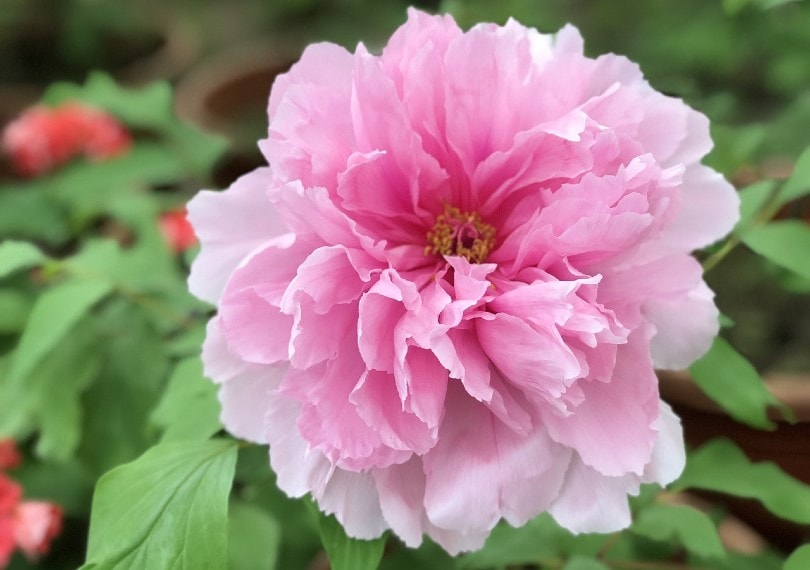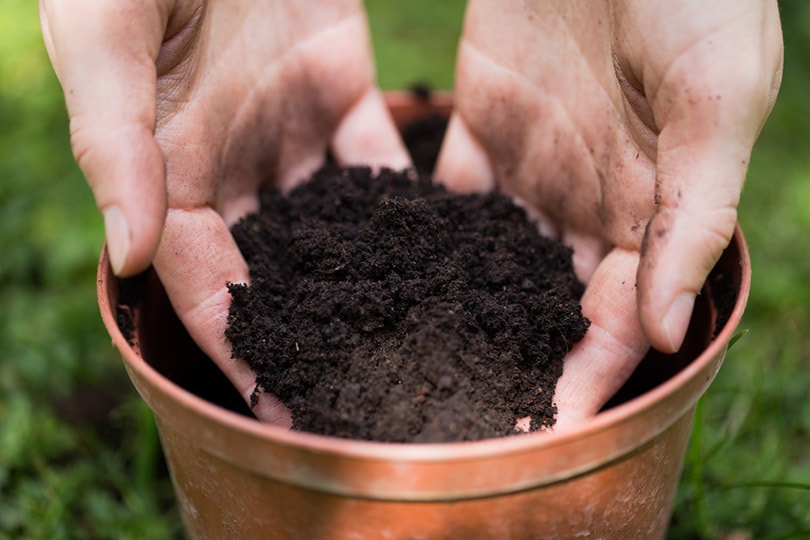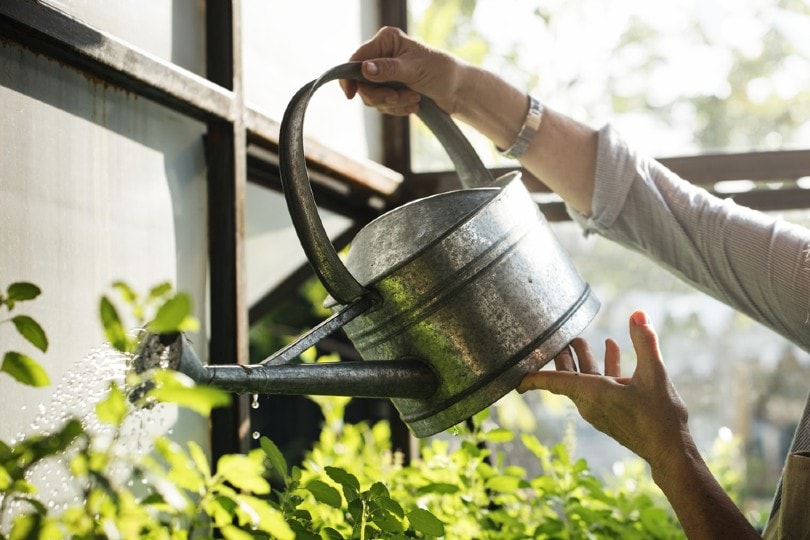How to Grow Peonies Indoors: Tips, Tricks, and Guide
-
Pete Ortiz
- Last updated:

The peony is a flower in the Paeoniaceae familyand grows best in the spring and late summer seasons. It is a perennials that, when in full bloom, consist of a large, fluffy, and fragrant flower with lush green foliage. Originating from Asia, Europe, and northwestern America, peonies come in many colors and sizes.
Scents can range from rose-like to citrusy to slightly spicy, while some have very little scent at all. In addition to being used for decoration, peonies are largely used in perfumes, oils, powders, and cosmetic and medicinal applications.
While peonies are most commonly grown outdoors, they are not limited to the garden and can make terrific house plants. They are known to be fussy and difficult to grow inside and must be planted and potted meticulously. However, once they begin to grow, they are quite resilient and can last for many years.
Peony Varieties
Peonies are categorized into six variety types: Single, Japanese, Anemone, Semi-Double, Bombe, and Full Double. There are approximately 40 species amongst these varieties that range in size and appearance.
When planting indoors, it is a good idea to pick a type that is on the smaller side, or about 1 foot in height. A couple of examples of smaller peonies include “Cinnabar Red” and “Peony Tenuifolia.”

Before You Begin
Where to Place Your Plant
It is essential to strategically place your peony plants in an area of your home exposed to approximately 6 to 8 hours of sunlight per day, ideally close to a large window. Keep your blinds closed on days when the sun is extra hot and intense.
Because the peony plant is top-heavy, using stakes to hold them up once they begin to bloom may be a good idea. Air circulation is also vital to prevent fungal disease. Keep pets away as they can damage the flowers and prevent them from blooming.
Soil
The soil used to grow your peonies must be humus-rich (meaning that it contains some organic matter such as compost), fertile, and moist. The soil must drain well and be pH neutral, which refers to how acidic or alkaline the soil is. Soil pH is calculated on a scale that ranges from 0 to 14, with a midpoint of pH 7. This midpoint indicates neutral soil (neither acid nor alkaline).
Soil testing kits determine the pH level of the soil and are simple to use and purchase. It is also important to use pots with ample drainage, as peonies do not do well with soggy roots.

Seeds Versus Tubers
Planting from seeds involves more time and effort than planting harvested seeds with developed roots (called tubers). However, many avid gardeners find that this is part of the fun. See step 1 for directions on this. Tubers can be easily purchased and planted immediately.
Pots
The right weight and size of the pots you are using are important to the successful growth of your peonies. The pot’s size should be 12 inches in diameter, 18 inches deep, and include holes at the bottom for proper drainage. Ensure that you are using a heavy enough pot (clay, for example) so that the heavy bulbs of the peony do not cause the pot to topple over when fully grown.
Keep in mind that the larger the peony, the larger the pot. Peonies do not do well when transplanted, so it is a good idea to plant them in the pots that you plan to keep them in.
The 5 Steps for Grow Peonies Indoors
1. Preparing Seeds
If planting from seeds, place the seeds in a clean plastic bag and store them in a cool place from October to January. This recreates the same conditions that the seeds would need to grow naturally. Cool temperatures, as well as the sealed plastic bag, mimic a seed buried underground throughout the winter.
After about 3 months, roots will have grown and the seed will have developed into a tuber. Only once they are developed will they be ready for potting. Ignore this step if you have purchased already developed peony tubers and plan to use those instead.
2. Planting
Once you are ready to plant your peonies (spring is recommended) fill your pots with moist potting soil about ⅔ of the way full.

3. Placing the Pots
Move the potted peony seedlings to a sunny location (south or west facing) with 6 to 8 hours of direct sunlight every day. In addition to natural light you can also use a grow light as a supplement. The fixture should be set up about 6 inches above the peony and left on for t 12 to 14 hours per day. A timer that cuts on in the morning and turns off at the end of the day is helpful.
4. Watering
Water the plant approximately once a week to maintain proper soil moisture. Keep the soil evenly moist, not too wet or too dry. Check the topsoil often to determine the amount of water the plant requires. Be sure not to overwater your plant as it can rot as a result.

5. Fertilizing
Add fertilizer to your peony when new stems appear, which is roughly once every month. Ensure that you are using a water-soluble houseplant fertilizer and not a garden-grown fertilizer, since it is made for plants grown in a pot or container. You can stop adding fertilizer around mid-summer.
Pest and Diseases
Insects that peonies attract include mealybugs, foliar nematodes, bulb mites, scales, ants, and beetles. These are much more common for peonies grown outdoors. Diseases that your peonies may contract include powdery mildew, white mold, verticillium wilt, Phytophthora blight, root rot, and measles. They are mainly caused due to a lack of nutrients, poor drainage, and air circulation.
While they are rare, it is important to act as soon as possible once you notice signs of disease. Prune or tear off leaves that are affected to prevent them from spreading to the rest of the healthy plant.
Keeping Peony Flowers in a Vase
Peonies can last over one week in a vase and make beautiful cut flowers. To ensure the best results, preserve your freshly cut peony stems in a moistened paper towel and keep them in a plastic bag in the refrigerator until you are ready to place them in a vase. Ensure you give the stems a fresh cut and then place them in room temperature water.

Preparing Your Peonies for the Winter Months
Peonies have about 2 to 3 months where they require rest. To prepare your plant for its resting period, begin to water the peony less often in late summer. Allow the soil to dry before watering it again to encourage it to go dormant for the winter. In addition to less water, slowly reduce the amount of light your plant is exposed to, coinciding with the number of daylight hours that naturally occur in the fall months.
Prune the stems down to the soil with a gardening shear once the leaves begin to die, and move the plant to a dark and cool location (an unheated garage or basement, for example).
Fun Facts
- Peonies symbolize a happy life and marriage.
- They make a beautiful garnish for summer cocktails or desserts.
Conclusion
Whether you plant tubers or seeds, peonies will make excellent additions to your home. They require more care when you plant them indoors, but once established, they can beautify your interior for several years. You can choose from 40 varieties to create a colorful display that will make your neighbors jealous.
Featured Image Credit: ghorng, Pixabay
Contents


